I'm thinking, as the year repeats, rather than making new posts, I should just direct you to the posts I made last year. Most likely I'll just end up saying the same thing over again - Sports Day, Speech Contests, Deja Vu?
But because I like the sound of my own typing, here's yet another post about sakura. If we say "cherry" in America, we think first of the fruit. To specify the tree and its flowers, we'd amend "Cherry Tree," "Cherry blossoms." I'm not sure what it says about the Japanese priorities, but sakura means specifically the blossoms, those of a tree that doesn't even bear fruit. The fruit, that does come from another species, is called sakuranbou, 桜ん坊, a word I like because the -bou kanji is also used in akanbou, 赤ん坊, which means baby. I have only seen cherries a la maraschino, in a rather pathetic bag of three. I'd almost think they can't be picked in Japan, except there's a song about them (which is a big karaoke favorite with the younger female teachers.)
But regardless of their fruitless state, sakura are a work of art, even a religion, on their own. In the brief few weeks that they're blooming, everyone makes it a point to go hanami, or flower-viewing. The ground in more popular parks turns blue with tarps. Not having a family or friends to party thusly with, I'll still claim a corner of the lawn on the weekend, or do a walk-through for the half-hour between work ending and the sun going down. We're lucky that our park is beautiful without the overwhelming popularity of Tokyo, etc.
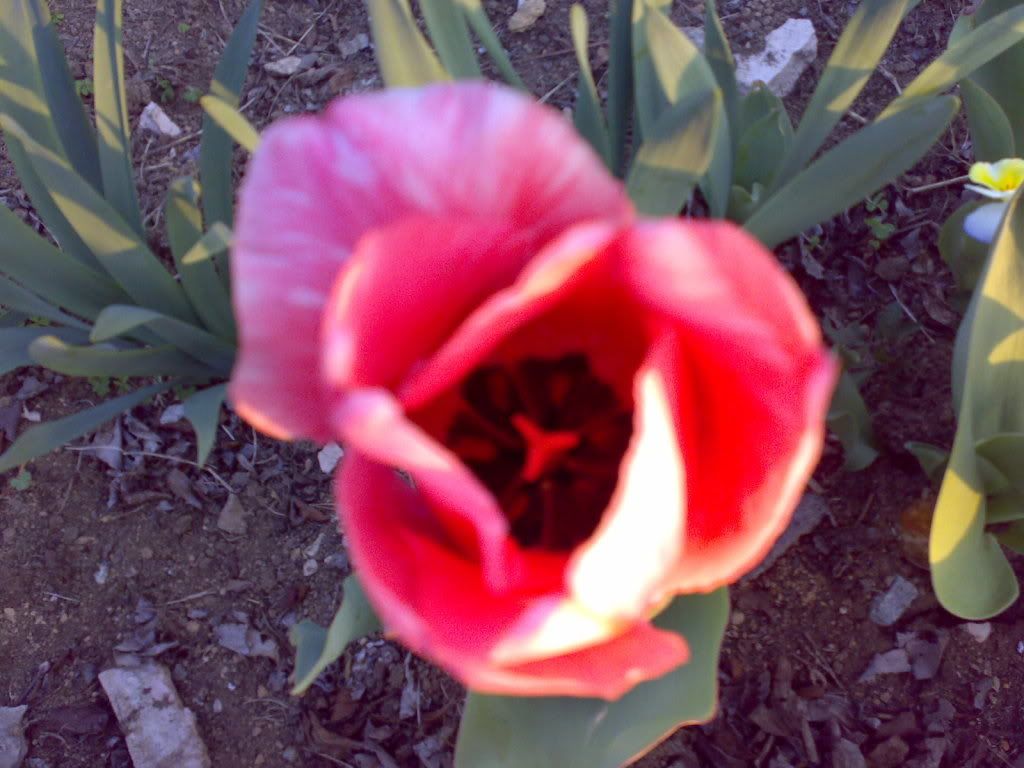
The most common variety of sakura is the someiyoshino. Tsuyoshi used that as a title of a song - I know you're probably tired of him, but I'll post this because he was inspired to write it while hanami-ing with his mother, because it's his thirtieth birthday, and because he's wearing some pretty funky glasses:
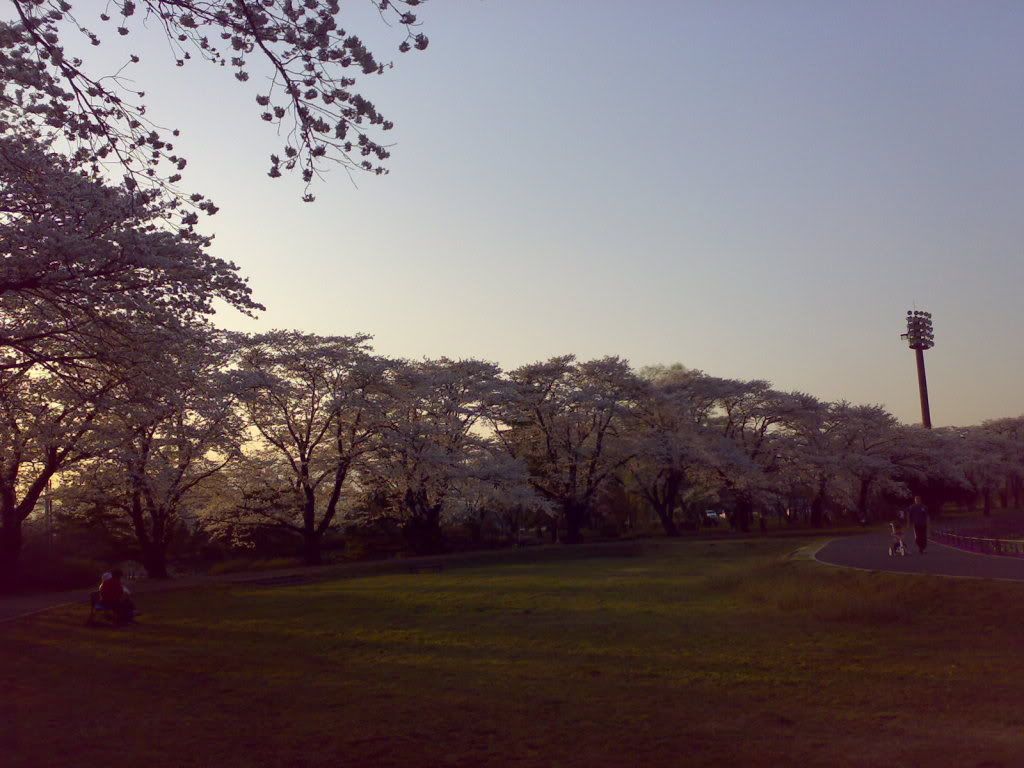
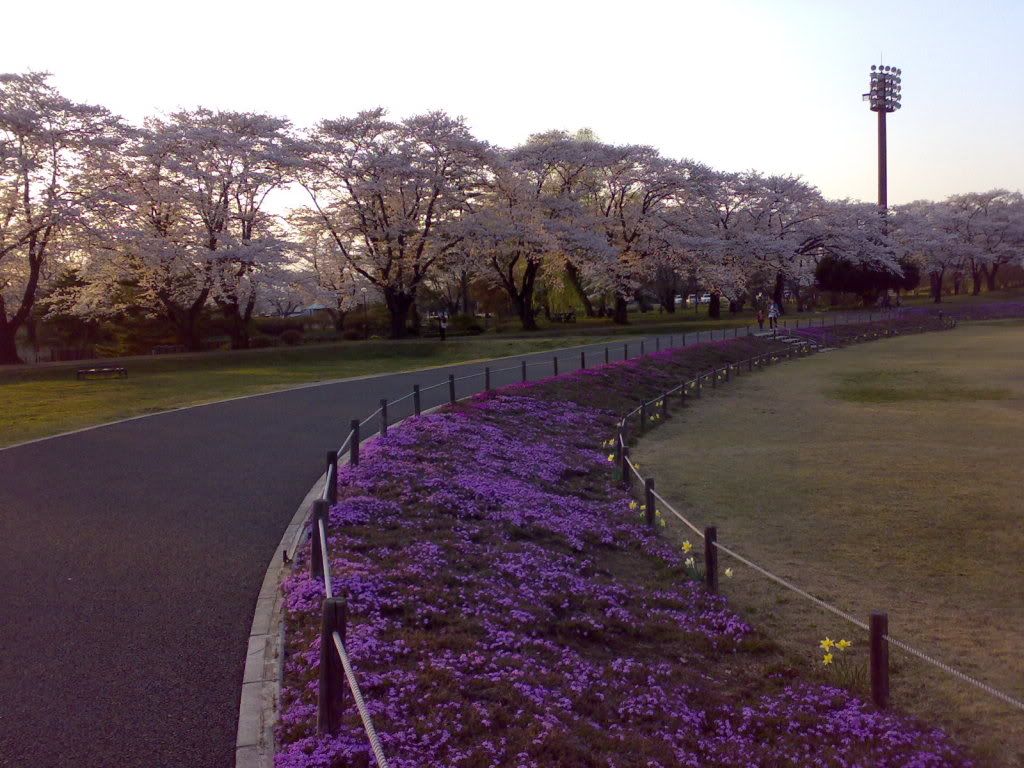
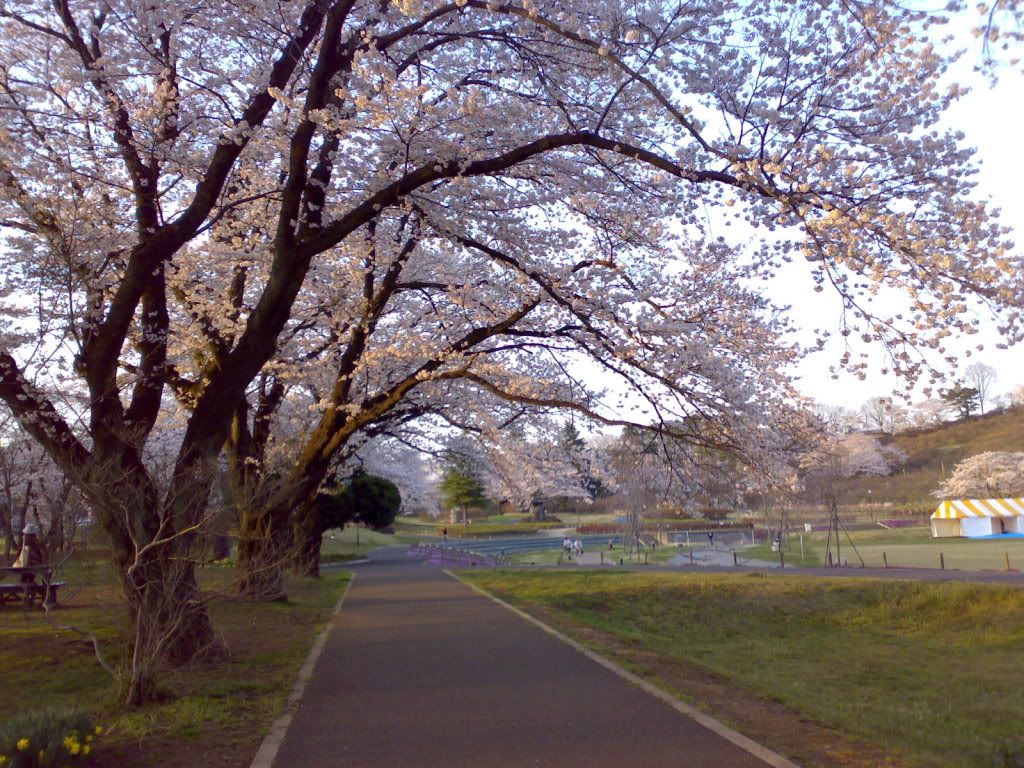
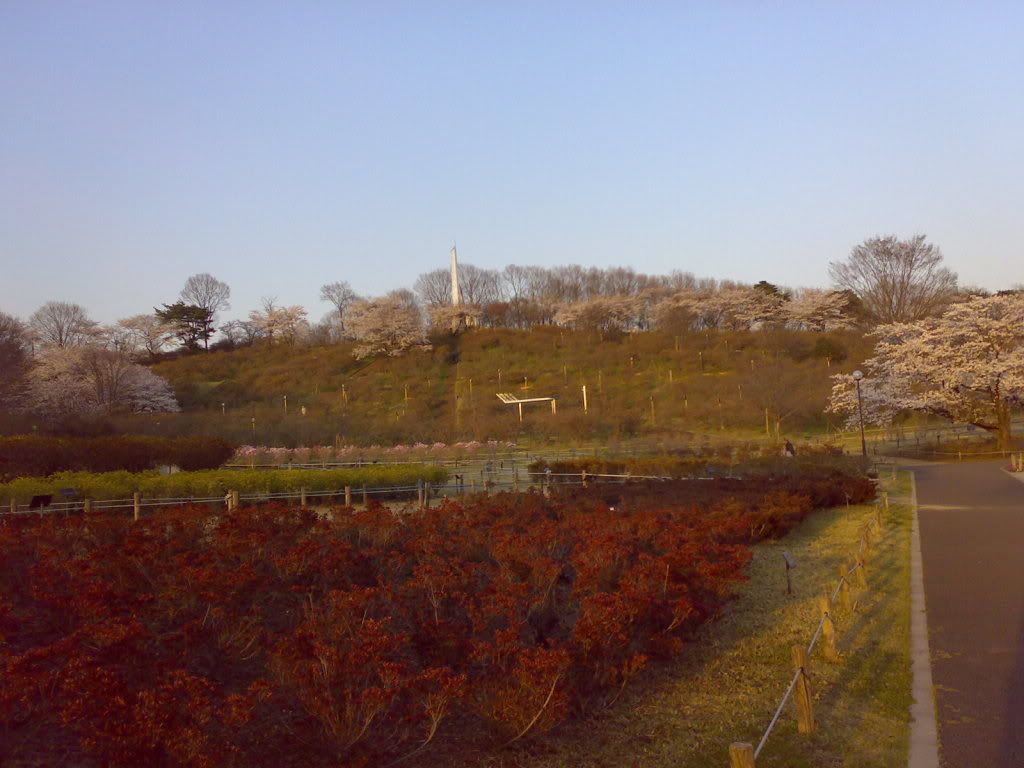
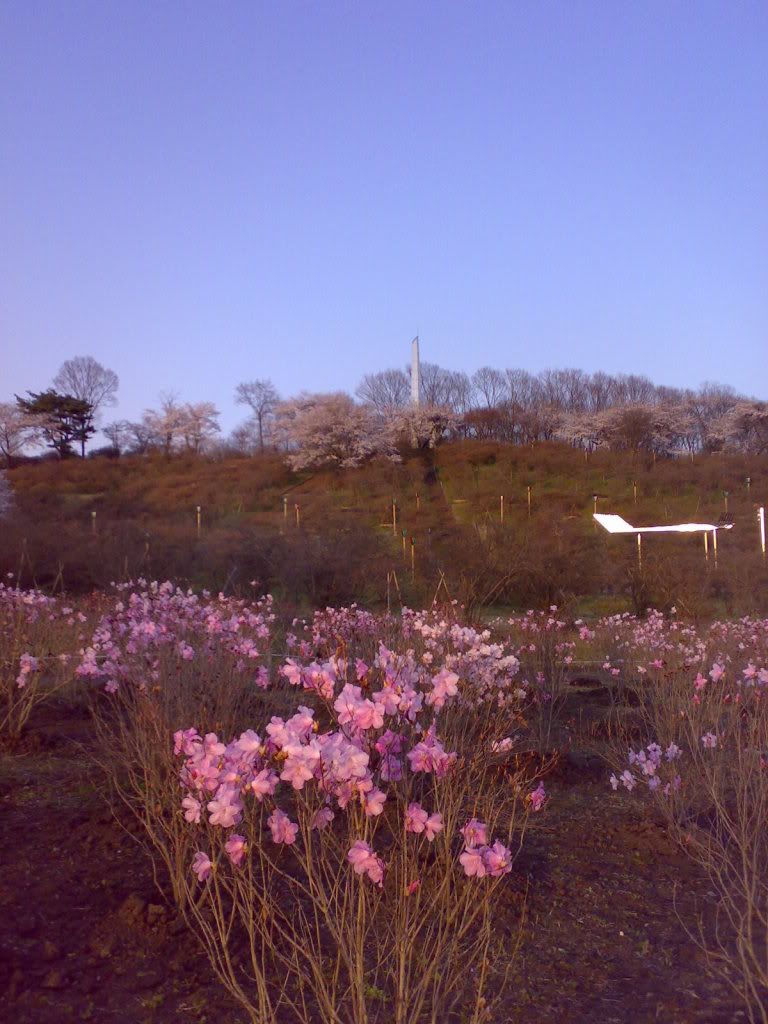
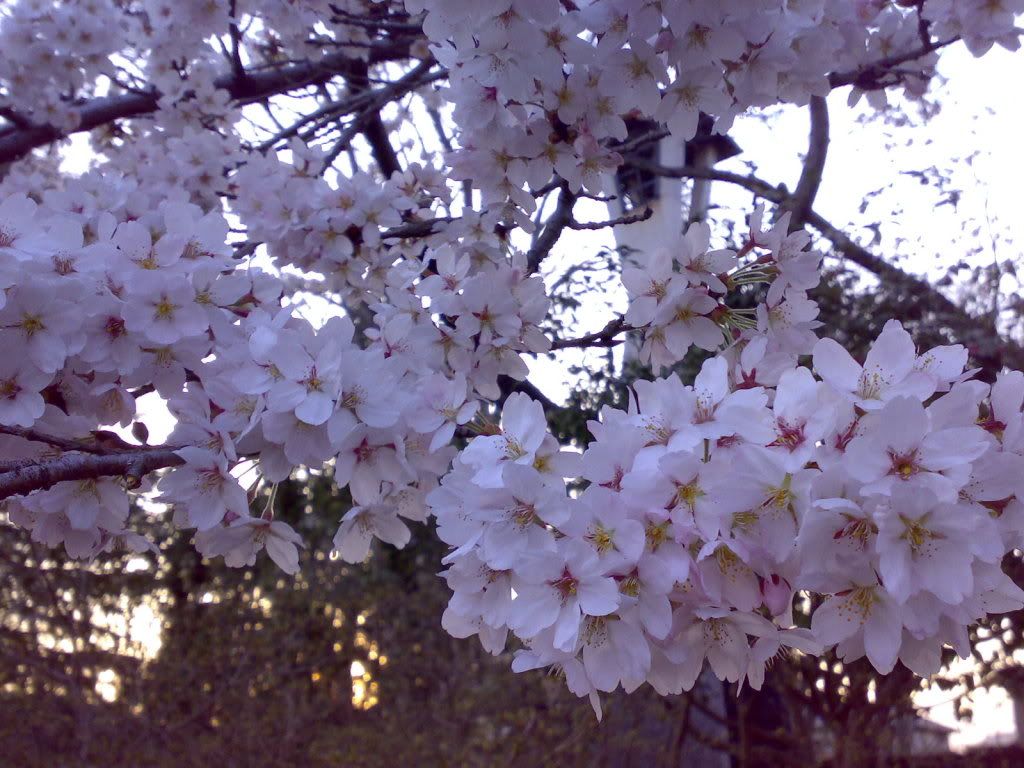
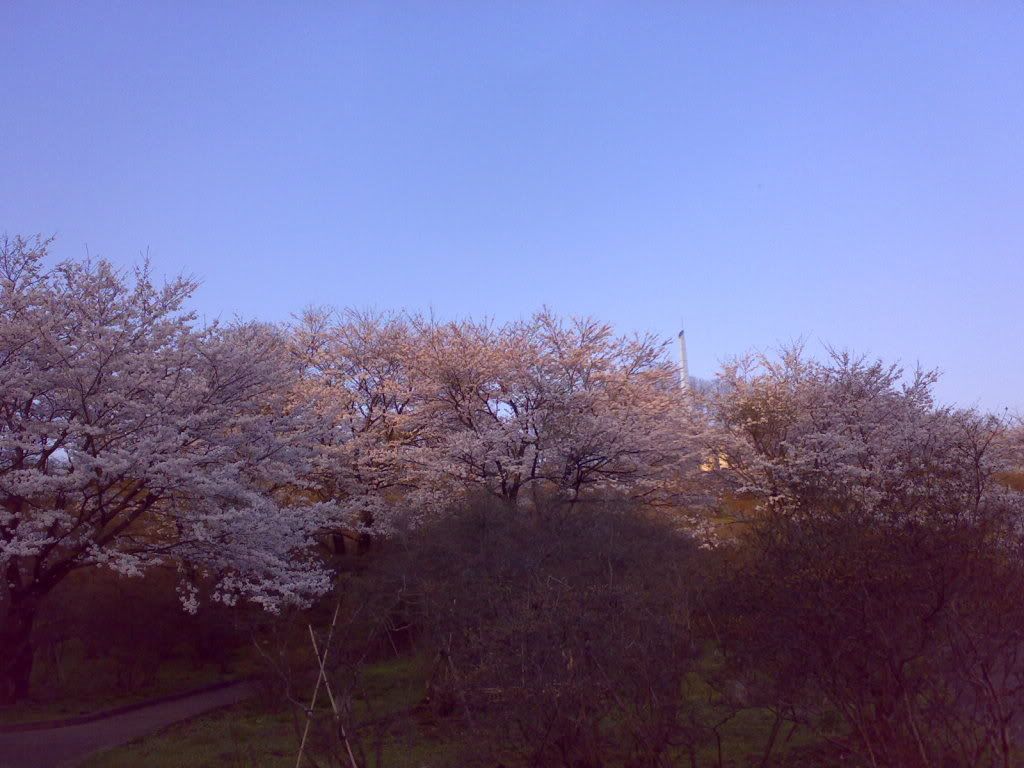
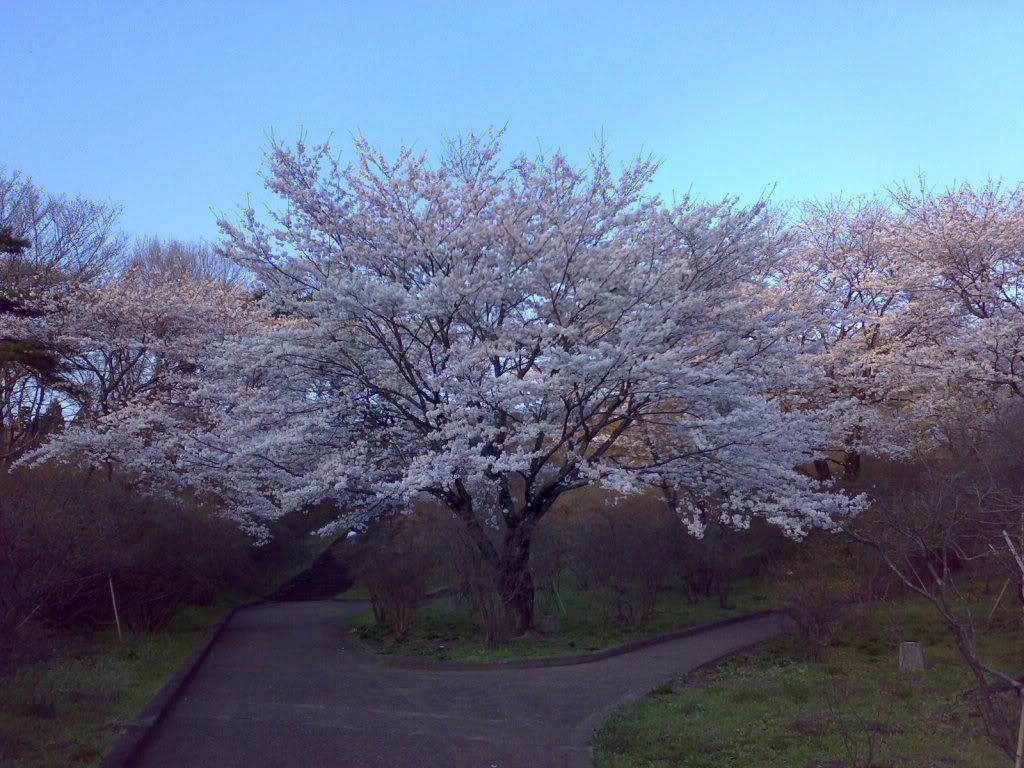
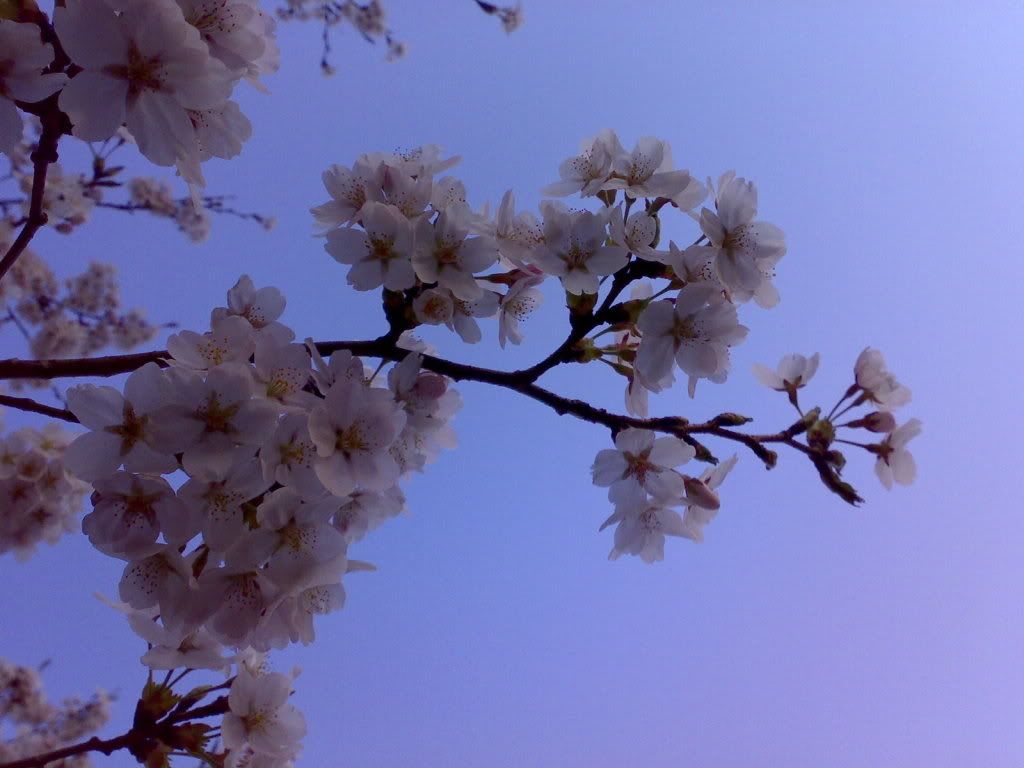
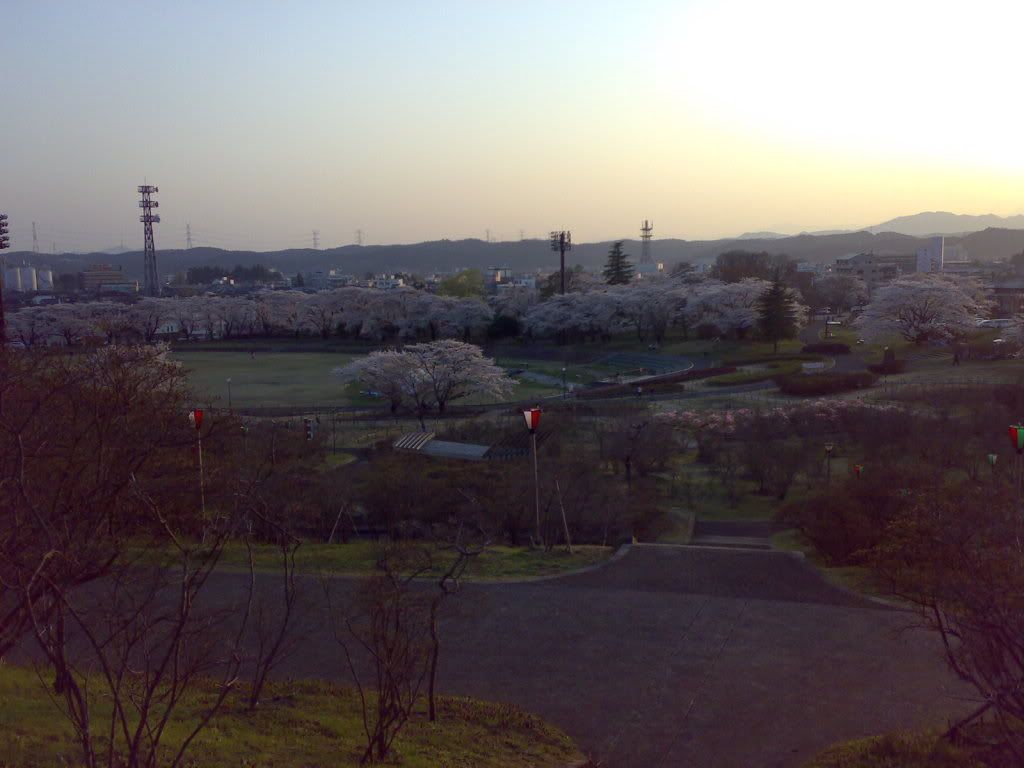
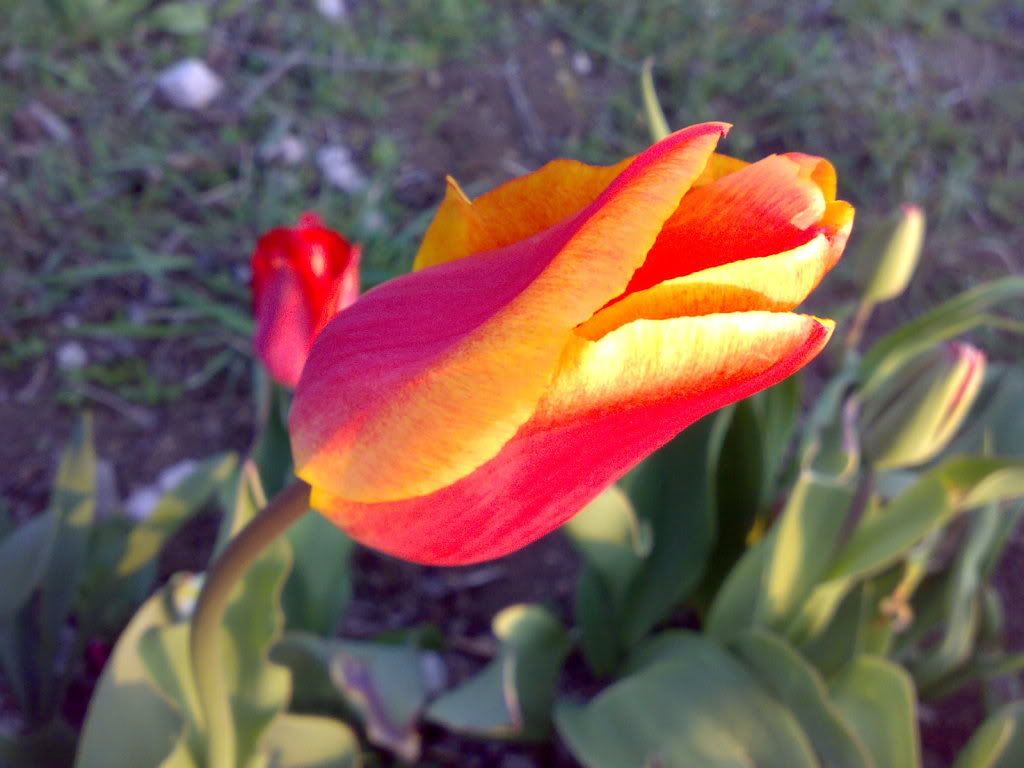
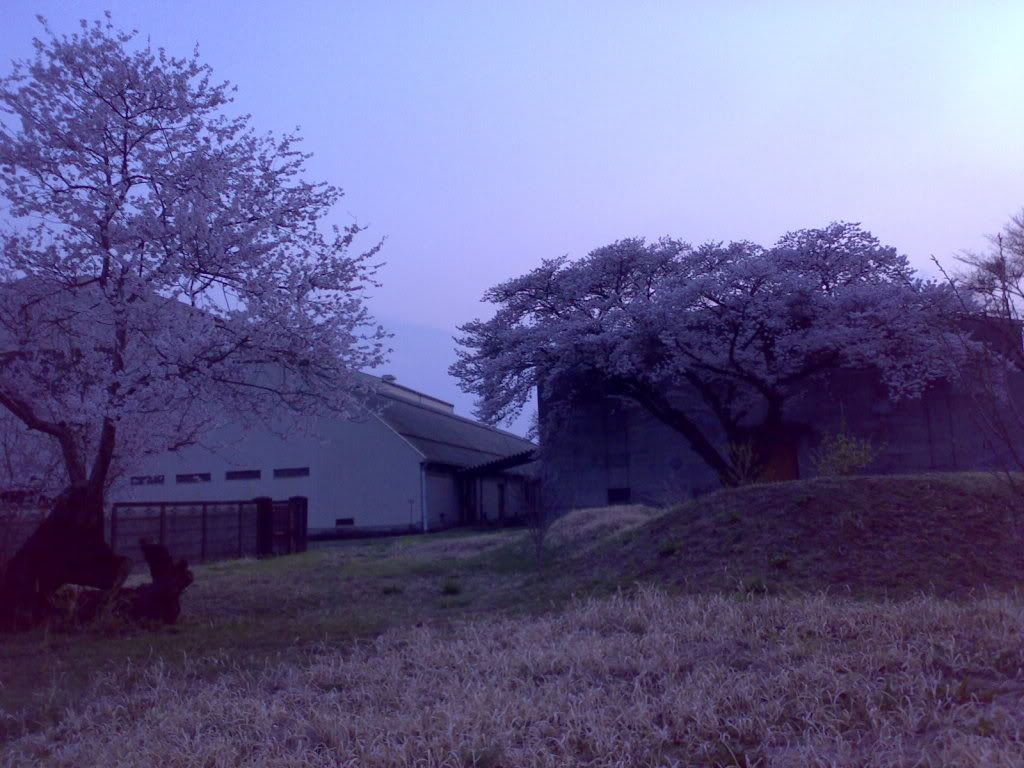
No comments:
Post a Comment